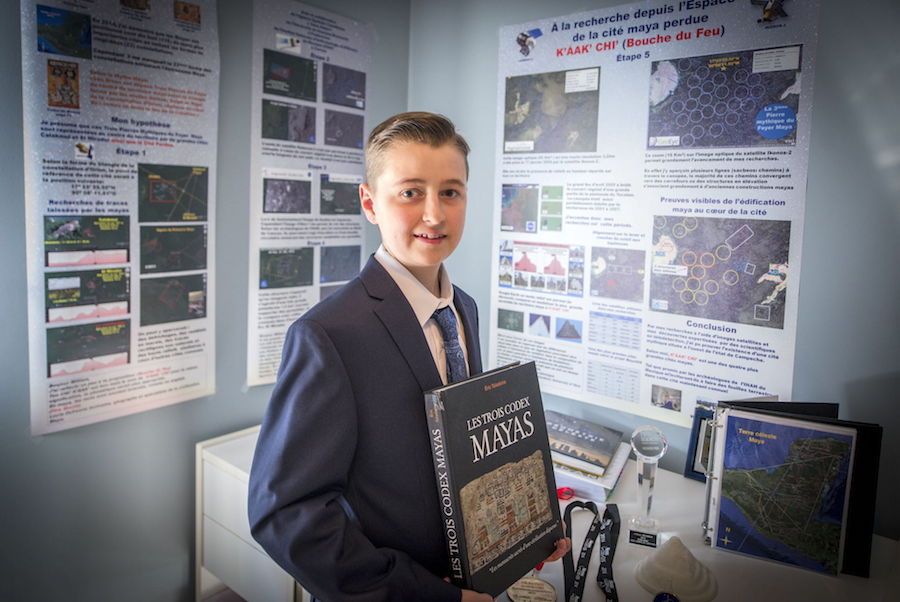A 15 year old boy from Quebec has made a correlation between the stars in the sky and the position of the Mayan cities. By making that correlation, he managed to discover a lost Mayan city.
William Gadoury, a teenager from Saint-Jean-de-Matha in Lanaudière, became a small launch to NASA, the Canadian Space Agency and the Japanese Space Agency, while his discovery is about to be disseminated in a scientific journal.
Passionate Mayan for several years, he analyzed 22 Mayan constellations and realized that if he connected on a map the stars of the constellations, the shape of each corresponded to position 117 Mayan cities. No scientist had ever found such a correlation between the stars and the location of the Mayan cities.
The genius of William, however, was to analyze a 23rd constellation. It contained three stars and only two cities matched on the card. According to his theory, so it should be a 118th Mayan city in a remote and inaccessible location in the Yucatan Peninsula, Mexico.
Analyses from satellites in different space agencies have revealed that there was indeed a pyramid and thirty buildings at the precise location identified by the young man. The Journal had access to satellite images which we see different structures of what may be an ancient city.
“Geometric shapes, such as squares or rectangles, appeared on these images, forms that can hardly be attributed to natural phenomena,” says remote sensing specialist at the University of New Brunswick, Dr. Armand LaRocque.
Not only he would have discovered a new Mayan city, but it would be one of the five largest. “When Dr. LaRocque told me in January, we distinguish a pyramid and thirty structures, it was extraordinary,” said the young man. He named this lost city K’ÀAK ‘CHI’ or ‘fire mouth “in French.
Could this principle be applied across the glob to discover other lost cities?
William Gadoury was interested in the Maya after the publication of the Mayan calendar announcing the end of the world in 2012. Teen found 22 constellations in a Maya Codex Madrid.
By connecting the stars of the constellations to create forms and applying transparencies with the constellations on a Google Earth map, he found that this corresponds to the Maya cities of the Yucatan Peninsula. In all, 142 stars to 117 correspond Mayan cities.
The brightest stars are the largest cities. In addition, the method used by William works with Aztec civilizations, the Incas and Harapa India.
Source (in French):

